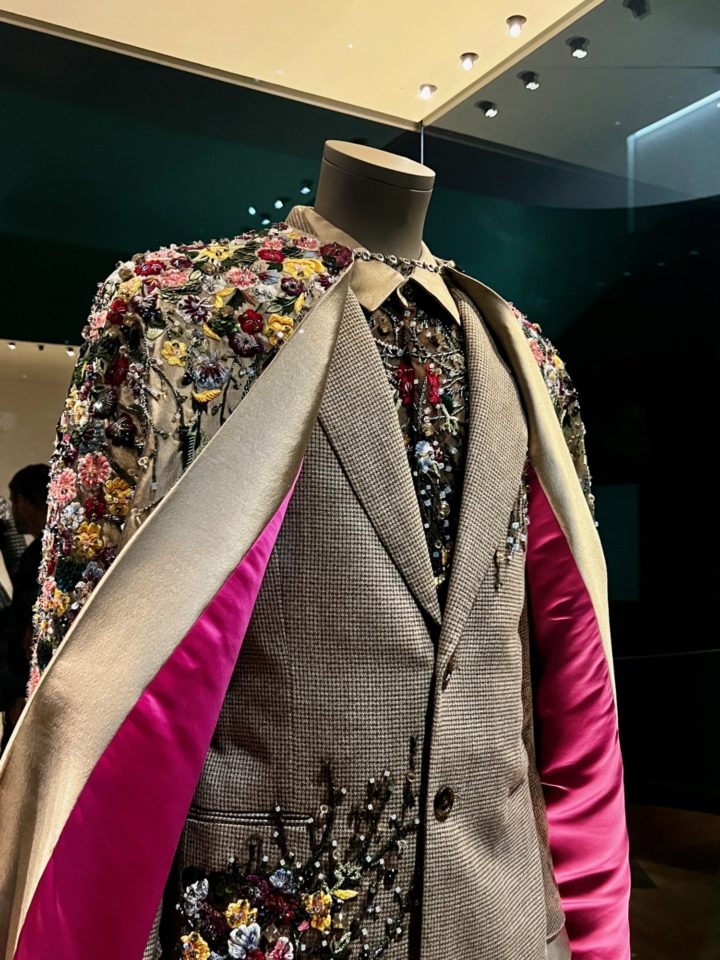V&A: The Art of Menswear


Garnering over 100 looks and artworks, the Fashioning Masculinities exhibition at the V&A museum gave a voice and story to menswear that many aren't used to hearing. Often thought to be simple and overshadowed by the variety of womenswear, this exhibition champions menswear and those that don it.
The exhibit divides itself into three parts, the first being 'Underdressed'. Exploring the undergarments and what lies beneath the surface of menswear, this section opens with an exploration of masculinity itself. Diving straight into the male form and where our idea of it came from, the entrance area holds a series of sculptures, undergarments, photography and films. References to Hercules and other greco-roman statues show where our concept of an "ideal" musclebound form may have originated. A great point is made here of explaining masculinity as a gender expression, highlighting the presence of non-binary and trans-masculine folks as equally influential and parcipative in the menswear sphere.

Following through to the second section of the exhibition you find yourself in the 'Overdressed' portion. Ostentatious and showy, this section shows the extravagance of menswear throughout European history, looking to times where men wore dresses, practically owned the colour pink, sported wigs and covered their garbs in ornate decorative designs. We can see contemporary menswear harking back to these more elaborate designs and the V&A have done a great job of portraying that link, showcasing pieces by Versace and Randi Rahm that emulate specific historical styles.

The third and ultimate part of the show titled 'Redressed' looks to the most recent century of menswear; the influence of geopolitical pressures, colliding cultures and society expectations formed stricter boundaries surrounding male dress. A huge departure from the overt flamboyance of the historical dress, this section featured the Tuxedo and other suits (mostly in black). A military sartorial legacy took the limelight from the early 20th century onwards and as this part of the exhibit shows, has only begun to be challenged and experimented with. The finale takes you through this reimagining of suiting; displaying designers like Alexander McQueen, John Galliano for Maison Margiela and JW Anderson - looking at how they deconstruct the suit concept and the idea of fixed masculinity along with it.
Overall, Fashioning Masculinities is an expansive showcase of many different lenses of menswear. The division into three makes for a great story throughout and adds context and rich history. With so many developments in both the garments themselves and society attitudes towards gender and expression, it's an intriguing time for menswear...and womenswear...all wear!
Posted 06 October, 2022 by Jack Cassel-Gerard